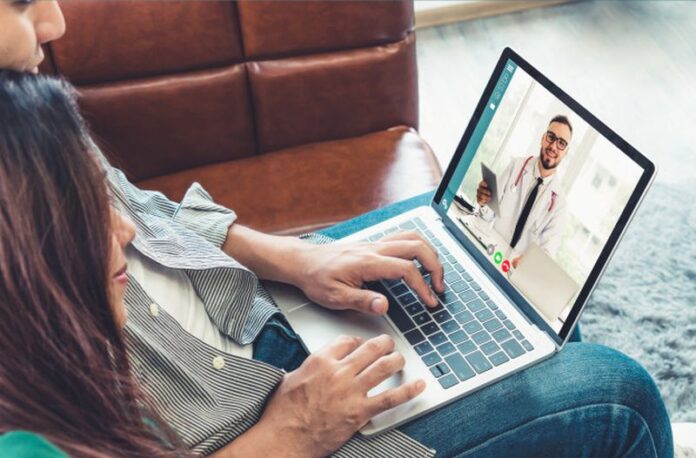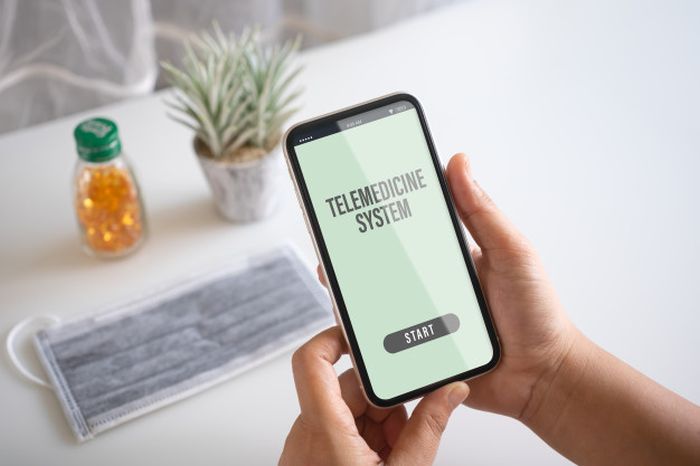
Thanks to COVID-19, the world has been altered in countless ways. From our personal lives to how major corporations are run, virtually everything has changed. In addition to disrupting lives and altering what we think of as “normal,” it has brought to light many problems that existed long before the pandemic began, including PPE shortages and inefficient methods of sanitizing nursing scrubs from Infinity Scrubs.
The United States healthcare system has long been plagued by inefficiency and an increasing shortage of qualified medical professionals. Due to various laws and regulations, though, potential solutions–such as telehealth–have been unavailable or only used in limited capacities in many areas.
Thanks to COVID-19, though, that is changing.
With global positive cases surpassing 7.9 million and millions of Americans being told to stay home to prevent further spread, the need for telehealth services has grown exponentially. Since March, countless providers and organizations have managed to roll out telehealth services to more efficiently and safely provide vital patient services.
Telehealth has undoubtedly helped millions of people receive medical care without leaving their homes throughout the past several months. It has also allowed many to get necessary medical assistance without visiting an emergency room or urgent care center. Still, many healthcare providers and patients alike wonder what the future holds in terms of telemedicine. If you’re curious, here are a few things you need to know about the inevitable future of telehealth.
Telehealth Will Be Used to Reduce the Spread of Infectious Diseases

All around the world and in many parts of the United States, people have been ordered to stay at home as much as possible in order to slow the spread of the novel coronavirus. This is one of the many reasons why telehealth suddenly became so widely accessible to the American people.
In a post-COVID-19 world, telemedicine is likely to stick around for the same reason. Slowing or preventing the spread of infectious diseases is a huge priority for many individuals, businesses and healthcare providers. As antibiotic-resistant forms of bacteria become increasingly common, telehealth can help prevent people from becoming exposed and subsequently infected.
While healthcare facilities do their best to keep everything clean and sanitary, it simply isn’t feasible to keep everything completely sterile when you have multiple patients who are sick with colds, influenza, etc. sitting in the waiting room throughout the day. And, of course, scrubs for women and men can be contaminated by ill patients and inadvertently spread germs to future patients. With telehealth, those patients can schedule appointments and consult with their doctors without leaving their homes and potentially spreading their germs. This option is also ideal for those who may delay seeking medical attention for fear of being exposed to harmful bacteria in a typical healthcare setting.
Telehealth helps keep medical personnel safe, too. If COVID-19 has taught Americans anything, it’s that doctors, nurses and other frontline workers are vital and that we face a major problem if they become ill and unable to work. Telehealth helps safeguard the essential healthcare workers and helps ensure that they’ll be there to care for patients when needed.
For these reasons, telehealth is likely to become bigger and bigger in the U.S. It will prove instrumental in slowing the spread of infectious disease and will become a powerful tool in ensuring the health and safety of patients and healthcare providers alike.
It Won’t Fully Replace In-Person Care

Keep in mind that while telehealth offers numerous benefits and may eliminate the need for many face-to-face appointments, in-person care won’t disappear entirely. There are limitations to what can be treated via an online meeting or phone call, and many patients will still need to visit doctors in person for the treatment of certain acute and chronic conditions.
When you do need to seek in-person care, the growing use of telehealth could mean that you’ll spend less time in the waiting room since your healthcare provider is less likely to be overburdened with patients. You’ll also have less to worry about in terms of being exposed to harmful germs and bacteria since there will likely be fewer people inside the facility.
Remote Healthcare Tools and Apps Will Become Common Household Items

One of the challenges of telehealth is that doctors are unable to obtain diagnostic data from patients when meeting for appointments remotely. While a nurse normally checks your weight, blood pressure, temperature, etc. when you arrive at a traditional appointment, doing so poses challenges during online or phone appointments.
This issue is already giving rise to remote healthcare kits and apps that patients can use to transmit diagnostic data to their healthcare providers. One company has already created a high-tech kit featuring a thermometer, stethoscope, pulse oximeter and otoscope that can be used to transmit data directly to a healthcare provider. In time, these kits are likely to become as common in American households as standard first-aid kits.
There is also a growing number of apps that harness the power of smartphones to capture and transmit data. There is a tablet app, for example, that can be used to detect early signs of Alzheimer’s disease in a patient’s eyes. As this type of technology continues to advance and evolve, there will likely be apps and in-home diagnostic tools that are capable of doing things that most people would have never dreamed could be done outside of a medical facility.
Telehealth Will Provide Countless Benefits for Patients and Providers Alike

Telehealth makes obtaining vital healthcare services easier, safer and more convenient for seniors and at-risk individuals. It allows them to get the care they need without potentially exposing themselves to germs and viruses that could prove deadly. It also makes healthcare easier and more efficient for those who have mobility issues, lack transportation or simply struggle to find time in their busy schedule to make an appointment.
For providers, it cuts down on the number of people in waiting rooms. It also decreases the number of people visiting emergency rooms and urgent care centers for non-emergent issues. Telehealth safeguards frontline healthcare workers by limiting their exposure to viruses and bacteria. It can even prevent the spread of infectious disease via nursing scrubs that have been worn in a public place following exposure to a contagious patient while the wearer was at work. The benefits of telehealth are numerous, and it’s likely to become a vital part of the American healthcare system.
















